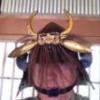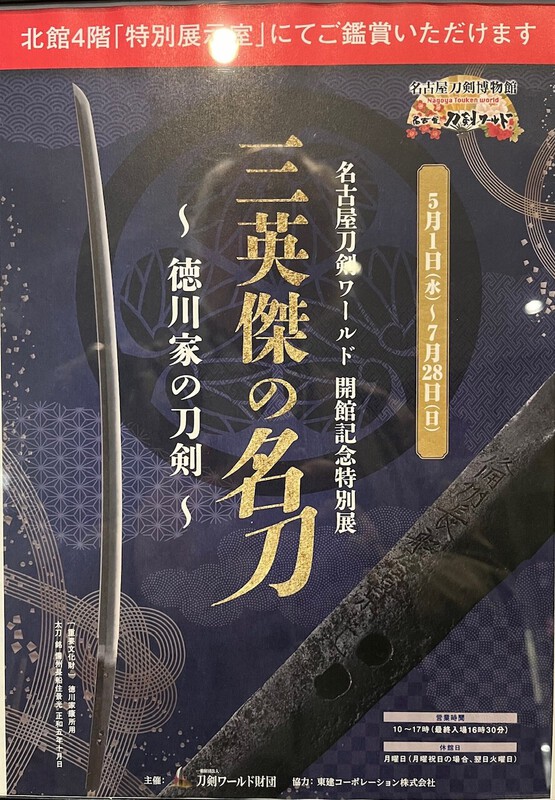-
Posts
13,782 -
Joined
-
Last visited
-
Days Won
249
Content Type
Profiles
Forums
Events
Store
Downloads
Gallery
Everything posted by Bugyotsuji
-

Matchlock converted to percussion gun
Bugyotsuji replied to samurai7202's topic in Tanegashima / Teppo / Hinawajū
土州住吉岡利政, with an old Kanji character 邱 丘 (?)for Oka (hill). "Do-shu ju Yoshioka Toshimasa", a listed smith. (Yoshioka Toshimasa, living in the old Han region of Tosa) The cutout for the pan looks too small to have been originally for a matchlock, so rather than a conversion, this may be a later-generation original percussion gun from the late Bakumatsu. -

Matchlock converted to percussion gun
Bugyotsuji replied to samurai7202's topic in Tanegashima / Teppo / Hinawajū
Nice. Liking the ginkgo leaf. Typical Tosa gun from the southwest of Shikoku. The smith name is barely legible at that angle. Will check against lists when I get home. -
Warfare was an aspect of life from ancient times, but as an adjunct, so was the battle against Nature. In the UK today the most dangerous animal might be a woolly sheep, a wasp or an adder, but Japan was very different. Every village would have come together out of necessity to fight off wild animals like boar or bear, and beating the ground and surrounding these quick-moving, muscly, aggressive animals with long poles or sharpened bamboo must have been a part of everyday life. Experiences like this would have filtered through to the bushi and aristocracy, not only on their hunts for wild animals, but also into battle. Spears of different lengths held upright showed a moving army from a distance, striking fear into the heart of the enemy, and a variety of movements (apart from simple stabbing) must have been quite disconcerting. Horses too might take fright at flashing spears being waved around. There was a time when curved bladed spears like hoko evolved into the straight blades of su-yari though, so maybe efficiency gradually overcame tradition. (Naturally the actual weapons to be used for human warfare were in a different category, far more sophisticated and artistic than the crude *implements used by peasant villagers.) *I remember visiting a house in the Japanese countryside where a lethal-looking spear blade was being passed around the room. A traditional blade? I'd never seen anything quite like it. "Sssshhhh..." someone said. "This is an 'unclean' weapon, a spear manufactured for sliding into the heart of a boar. Naturally it could never be legally registered."
-
It’s a Sanskrit seed syllable.
-
Well, the place bowled me over. Like opening glass doors and the Titanic sea rushes in. What is your bag? They’ve got it. Too tired now to report fully, but worth setting aside a minimum of one day. Just too much to absorb in one run-around. Only part of what they’ve accumulated is on display. And they’re still tweaking it. If I was allowed a criticism I might choose the tall glass cases with giant standing armour scarecrows oops… mannequins inside. Erm, no. They look silly. They need serious work! ‘Nuff said.
-

Edo Period Corner Part II
Bugyotsuji replied to estcrh's topic in General Nihonto Related Discussion
So the guy says it might take until October. Covering my disappointment I replied, “No worries, I’m not in a hurry.” And today the phone rings and he says it’s ready. This week I don’t have time to go and get it…… aaaarrrrgggghhhhh… -
I have a Netsuké cup with ‘overflowing’ designs indicating saké perhaps, shōchū, or doburoku, Korean style cloudy saké. The only shot I can find. Apologies!
-

Edo Period Corner Part II
Bugyotsuji replied to estcrh's topic in General Nihonto Related Discussion
Yesterday I met the guy who is arranging the work and managed to catch up a little on the long gun. Although he is supremely busy with his livelihood, he said he couldn't resist taking the lockwork apart. The internal mainspring coil is iron, (many are shinchu) but the little catch had worn away, preventing the serpentine from staying locked in the upright position. He has filed a new notch, and says it now works fine. "These things needed constant adjustment", he commented. That reminded me of an old Kamakura screen showing the garden of a residence with archery stands and accessories, and various bushi drawing and stringing bows, etc. After fashioning a new sakura-za for the mekugi ana, he will pass it along to the guy with the magic to loosen any (?) stuck Bisen. And Bob's yer uncle! (I managed to extract the jammed ramrod, and to find a genuine old one which fits almost exactly.) -
Hmmm. it does not seem to have any function there towards the end of the saya, being purely decorative. Does it refer to an exotic sake jar, from Okinawa for example, or the Ainu perhaps?
-
Kitau, kitaeru are the same 鍛 as Tan. It seems many of the signatures end in 鍛之 "forged by Kane-somebody", and the stamp is an added guarantee of reliability & authenticity. So Bruce would like to know here which particular forge in Mino/Seki added this hot stamp, right?
-
濃州住人兼常鍛之 無し Nō Shū Jū Nin Kanetsune kitae kore (Reverse) Nashi (nothing)
-
Ah great, thanks! (Is that cork?)
-
Mmm… quite understated, Oli. Not a bad thing. How does that look from other angles?
-
Wow! Congratulations to Ford et al. Spotted several people I know on that list. Must remember to say well done!
-
群がる muragaru, get together. I guess one sage would be OK, but two of anything is not generally considered a lucky number in Japan (divisive, set up for strife, except for marriage where two become one), so three could be ideal. (Four is also avoided, and five would surely be too much work for most artisans!)
-
Nice object. Looks like it says wind 'once a week'.
-

Isao Machii split a stone
Bugyotsuji replied to DoTanuki yokai's topic in General Nihonto Related Discussion
-
These are not too common! Interesting. Somewhere I have a very old pair of iron 蝉 (semi) cicada menuki, with remains of zogan, but the features are largely rusted away. Will add them here if I can remember.
-
Thanks. It was that tilted stroke that threw me. Run a comparative signature search with: 正阿弥包矩
-
Can you get a clear shot of the two-character 'Kanenori' on your left tsuba, Howard? I cannot see the 'nori' clearly.
-
模 has the meaning of ‘in tribute to’, or ‘copy of’. (兼元Kanemoto?)











